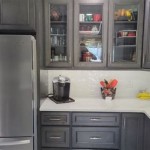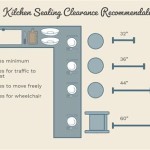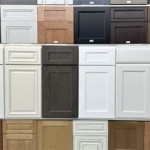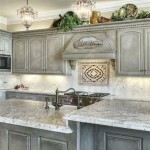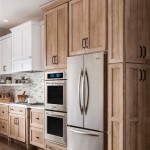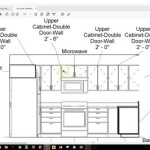What Is The Best Method For Painting Kitchen Cabinets In Taiwan?
Painting kitchen cabinets can dramatically transform a kitchen’s aesthetic, breathing new life into a space without the expense of a full renovation. In Taiwan, where kitchens often face unique challenges due to humidity and potential exposure to cooking fumes, selecting the optimal painting method and materials is crucial for achieving a durable and aesthetically pleasing result. This article will delve into the best methods for painting kitchen cabinets in Taiwan, taking into account the specific environmental factors and common cabinet materials found in Taiwanese homes.
Several factors contribute to the "best" method, including the initial cabinet material, desired finish, budget, skill level, and the time available for the project. Understanding these variables is paramount before embarking on the painting process. A failure to account for these elements can lead to unsatisfactory results, including peeling paint, uneven finishes, and premature wear and tear.
Common cabinet materials in Taiwan include solid wood (often Taiwan Cypress or imported hardwoods), plywood, particleboard with melamine or laminate surfaces, and occasionally metal. Each material requires a different approach to surface preparation and paint application for optimal adhesion and longevity.
Surface Preparation: The Foundation of a Lasting Finish
Regardless of the cabinet material, thorough surface preparation is the most critical step in ensuring a successful paint job. Inadequate prep work will invariably lead to paint failure, regardless of the quality of the paint used. This process involves several key steps: cleaning, degreasing, sanding, and priming.
Cleaning: Taiwanese kitchens are often subject to significant grease and grime buildup due to the style of cooking prevalent in the region. Thorough cleaning is the first order of business. A strong degreaser, such as trisodium phosphate (TSP) or a commercially available kitchen cleaner specifically designed to remove grease, should be used to scrub all surfaces. Rinse thoroughly with clean water and allow to dry completely. This step is crucial because paint will not adhere properly to greasy surfaces.
Sanding: Sanding creates a textured surface that allows the primer and paint to grip effectively. The grit of sandpaper required depends on the cabinet material and existing finish. For glossy or laminate surfaces, a coarser grit (around 120-180) is needed to dull the surface and provide "tooth" for the primer. For already painted or varnished surfaces, a finer grit (around 220) is sufficient to smooth out imperfections and remove loose paint. When sanding, it is important to sand evenly and avoid gouging the surface. After sanding, thoroughly remove all sanding dust with a tack cloth or a vacuum with a brush attachment. Dust particles can compromise the paint finish.
Priming: Priming is essential for several reasons. It seals the cabinet surface, prevents stains from bleeding through the paint, and provides a uniform base for the topcoat. The appropriate primer depends on the cabinet material. For solid wood, an oil-based primer is often recommended to prevent tannins from bleeding through the paint. For laminate or melamine surfaces, an adhesion-promoting primer is necessary to ensure that the paint properly adheres. Select a high-quality primer specifically designed for the cabinet material. Apply the primer evenly, following the manufacturer's instructions regarding drying time. In particularly humid environments like Taiwan, allowing ample drying time for the primer is crucial to prevent moisture from being trapped beneath the paint, which can lead to blistering or peeling.
Selecting the Right Paint and Application Method
Choosing the right paint and application method is equally important as surface preparation. The ideal paint should be durable, washable, and resistant to moisture and grease. Two primary types of paint are commonly used for kitchen cabinets: oil-based and water-based (latex or acrylic).
Oil-Based Paint: Oil-based paints offer excellent durability and a smooth, hard finish. They are particularly resistant to chipping and scratching, making them a good choice for high-use areas like kitchen cabinets. However, oil-based paints have several drawbacks. They emit strong odors, require mineral spirits for cleanup, and have a longer drying time. They can also yellow over time, especially in areas with limited sunlight. The VOC (volatile organic compound) content is also higher, making them less environmentally friendly and potentially posing health risks if not used with proper ventilation and respiratory protection.
Water-Based (Acrylic or Latex) Paint: Water-based paints have become increasingly popular due to their ease of use, low odor, and quick drying time. Modern acrylic and latex paints offer excellent durability and are resistant to fading and yellowing. They are also easier to clean up with soap and water. The key is to select a high-quality acrylic or latex paint specifically formulated for cabinets or trim. These paints are designed to provide a hard, durable finish that can withstand the rigors of a kitchen environment.
Application Methods: Several methods can be used to apply paint to kitchen cabinets, including brushing, rolling, and spraying. Each method has its advantages and disadvantages.
Brushing: Brushing is the most common and accessible method for DIYers. It requires minimal equipment and allows for precise application in tight spaces. However, brushing can leave brush marks, especially with oil-based paints. To minimize brush marks, use a high-quality brush with synthetic bristles and apply the paint in thin, even coats, following the grain of the wood. A light sanding between coats can also help to smooth out any imperfections.
Rolling: Rolling is a faster method than brushing and is suitable for larger, flat surfaces. Use a short-nap roller (1/4 inch or less) for a smooth finish. Like brushing, rolling can leave a textured surface, known as "orange peel." To minimize this, use a high-quality roller cover and apply the paint in thin, even coats. Back-brushing (lightly brushing over the rolled surface with a brush) can help to smooth out the finish.
Spraying: Spraying provides the smoothest, most professional-looking finish. It eliminates brush marks and roller texture entirely. However, spraying requires more equipment, including a paint sprayer (airless or HVLP), and more preparation, including masking off the surrounding area to protect it from overspray. Spraying also requires practice and skill to achieve an even coat without runs or drips. In Taiwan, where space may be limited in urban apartments, spraying can be challenging due to the need for adequate ventilation and dust control.
Addressing Humidity and Material Considerations in Taiwan
Taiwan's subtropical climate presents unique challenges for painting kitchen cabinets. High humidity levels can affect the drying time of paint and primer, potentially leading to blistering or peeling. Additionally, humidity can exacerbate the effects of moisture on wood cabinets, causing them to swell or warp. Cabinet materials themselves react differently to humidity and moisture. Particleboard, particularly, is highly susceptible to moisture damage and should be sealed meticulously to prevent water absorption.
To combat these challenges, it is crucial to use moisture-resistant paints and primers. Applying multiple thin coats of paint, allowing each coat to dry completely, is preferable to applying one thick coat. Thick coats are more prone to trapping moisture and cracking. Dehumidifiers can be used in the painting area to reduce humidity levels and promote faster drying times. Ensure adequate ventilation during and after painting to allow moisture to escape.
When dealing with solid wood cabinets, consider the type of wood. Taiwan Cypress, a common material in older Taiwanese homes, is naturally resistant to decay and insects but can still be affected by humidity. Properly sealing the wood with an oil-based primer or a moisture-resistant sealant is essential. For laminate or melamine cabinets, choosing a specialized adhesion-promoting primer is crucial for long-term durability in a humid environment. These primers are designed to create a strong bond between the smooth, non-porous surface and the paint. A failure to prime appropriately will almost guarantee peeling within a relatively short timeframe, especially given the temperature and humidity fluctuations common in Taiwanese kitchens.
Ultimately, the best method for painting kitchen cabinets in Taiwan involves meticulous surface preparation, selecting the appropriate paint and primer for the cabinet material and environment, and applying the paint using a method that suits the individual's skill level and available resources. The key is to prioritize durability and moisture resistance to ensure a long-lasting and beautiful finish. Careful planning and execution will result in a kitchen transformation that enhances both the value and enjoyment of the home.

How To Paint Your Kitchen Cupboards Country Chic

Real Estate Pro Tip Boost Listing Value By Refreshing Kitchen Cabinet

Sunmica Vs Paint Which Is Better For A Kitchen Makeover Homify

Two Tone Kitchen Cabinets Ideas Oppolia

How To Paint Kitchen Cabinets Homify

Painted Kitchen Cabinet Ideas Colors Designs Design Pulte

How To Refinish Your Kitchen Cabinets With A Gallon

Modern White Kitchen Cabinets With Wood Accents Oppein

The Art Of Kitchen Colour Six Designs To Inspire Your Dream Habitat By Resene

Shaker Kitchen Cabinet Guide Oppein
Related Posts

